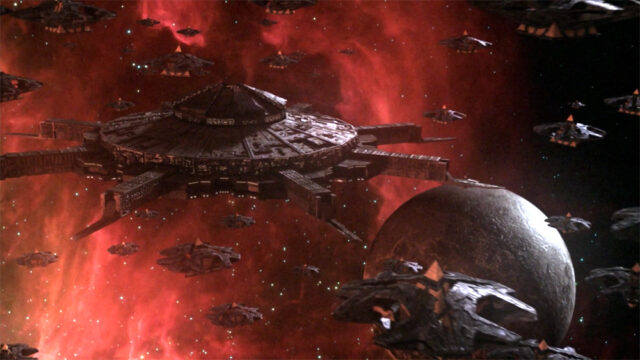
For thousands of years the mighty Goa’uld empire stretched across the Milky Way Galaxy. Originating in the waters of P3X-888, this cunning race of serpentine creatures learned that they could take control of humanoid host bodies. They eventually left their world – with a ruthless intelligence and delusions of godhood.
As they moved out into the wider galaxy the Goa’uld discovered technologies left behind by more advanced species, including the Ancients. Their scientists reverse-engineered the technology, and from this was born an array of weapons and vessels capable of traversing the stars.
Along with their control of the Stargate network and the enslavement of countless worlds, the ships of the Goa’uld fleet allowed the parasitic creatures to become the dominant species in our galaxy.
Here we’re making a complete survey of every class of vessel in the Goa’uld armada. (If you haven’t watched Stargate SG-1 yet, there will be a few story SPOILERS here.) Click to begin the video version, or keep reading below …
PYRAMID SHIP
Earth’s first close encounter with a Goa’uld ship after Jack O’Neill and Daniel Jackson led a team through the Stargate was Ra’s pyramid ship. The Cheops-class vessel was used by the Supreme System Lord, who landed the ship on the planet Abydos. Among the Goa’uld fleet this is a less common type of capital ship, known to be used particularly (though not exclusively) by the family of Ra. Heru’ur attempted to build a trio of them on the planet Cimmeria (“Thor’s Chariot”), and Hathor held a pyramid – possibly a landed ship – in “Into the Fire.”
This ship’s 4-sided polyhedral design is proof of Daniel Jackson’s theory that the pyramids of the ancient world were built as landing platforms for alien spacecraft.
Once landed, the pyramid ship’s primary hull retracts into several distinct plates, allowing light to enter the Goa’uld’s throne room near the top of the pyramid. While on the ground the vessel doubles as a palace for the Goa’uld ruler, from which he or she reigns over the local subjects while on the planet.
The pyramid ship is equipped with weapons, transport rings, and an unknown number of death gliders ready to be deployed against an enemy force … or to terrorize the enslaved populace.
HA’TAK
Much more common on the television series is the Ha’tak-class Goa’uld mothership. It too follows the classic pyramid shape in its central design aesthetic, but with two big differences: the internal pyramid is three-sided rather than four, and is surrounded by a superstructure. This suggests that the ship was not designed to use four-sided pyramids for surface landings (though it seems to be capable of doing so in a pinch, as seen in the final moments of “Double Jeopardy” – an extra challenge the writers presented to SG-1‘s visual effects team!).
All of this, as well as the widespread proliferation of Ha’tak motherships among all Goa’uld powers in the galaxy, suggests that this class of capital ship is of more recent design and construction than the pyramid ship.
The vessel utilizes crystal-based technology for ship’s functions. It’s built around a centralized engine room and a command bridge, called the Pel’tac. The bridge typically features an ostentatious throne for the Goa’uld commander, as well as separate helm and weapons controls.
Like the pyramid ship the Ha’tak is a flying palace, able to sustain a Goa’uld (including its life-extending sarcophagus) and a detachment of Jaffa for extended deployments.
The ship also comes fully equipped with transport rings and bays of death gliders. Its powerful energy weapons can be used against other space-borne vessels, or directed at the surface of a planet for orbital bombardment. In this fashion a single Ha’tak is capable of leveling whole cities in a matter of minutes. When a Goa’uld means to conquer a world, the ship can land atop a pyramid or even a mountaintop (as seen in the alternate reality in “There But For the Grace of God”).
DEATH GLIDER
The small-profile fighter of choice for the forces of the Goa’uld is the death glider (called “Udajeet” in the language of the Goa’uld). The glider seats two Jaffa in combat for both space and atmosphere, though it appears that one soldier is capable of both pilot and weapons control when necessary. Either that, or there are multiple glider models currently in service (which would help explain some of the visual differences between the movie, the early seasons, and later episodes).
Death gliders are fast-moving craft, giving a talented pilot the ability to avoid enemy fire while fighting in close quarters. They are capable of space flight, and can also operate in an atmosphere. With a smooth terrain, gliders are also capable of landing. The fighters cannot, however, create a hyperspace window on their own.
A powerful staff cannon is mounted under each wing, making the craft a powerful and effective weapon against enemy ships or ground-based targets. The cannons are two to three times larger than a Jaffa staff weapon, and in a pinch they can be detached and used as a heavy hand weapon. (We saw Teal’c use the glider cannon this way in Season Five’s “The Fifth Man,” and again in “48 Hours.”)
Gliders are also outfitted with broadcast speakers to allow the pilots to verbally terrorize a population from the sky – seen in the movie, when a pair of gliders are sent to terrorize the Abydonian city of Nagada. Like other Goa’uld technologies and design choices, they are designed to control through terror and intimidation as much as to win battles.
TEL’TAK
The Tel’tak is a mid-sized vessel, the work horse of the Goa’uld fleet. Throughout the series it’s also called a cargo ship and a scout ship, names that point to the Tel’tak’s typical uses – and its versatility. Ships are commonly deployed to ferry cargo, and to perform reconnaissance missions into hostile territory.
This vessel too can operate both in space and in an atmosphere, and it can easily land on the surface of a planet. Unlike a death glider, the scout ship is capable of independent hyperspace flight.
The ship is divided into two compartments, separated by a bulkhead with a sealing door. The forward compartment is a spacious flight deck, which includes an external point of entry and up to four escape pods (each capable of holding a single individual).
The pilot sits in the starboard seat, making use of a wearable heads-up display to pilot the craft and monitor both internal and external sensors.
The Tel’tak’s aft compartment is reserved for all manner of cargo, and also contains a set of transport rings for easy onloading and offloading of cargo while the ship is still in flight. The ship’s central bulkhead may also be removed to allow for more space during flight.
The ships are unarmed and typically not equipped with energy shields, making its cloaking device the ship’s only real means of defense – if, that is, you’re lucky enough to be issued a cargo ship that has one. (As far as we can tell, in the entire run of the franchise we’ve only seen one Tel’tak armed with offensive weapons. The bounty hunter Odai Ventrell shot down another Tel’tak on approach to Earth in the tenth-season episode “Bounty.”)
AL’KESH
Now if you’re ready to go to war, you’re going to need an Al’kesh. This powerful ship is a Goa’uld mid-range bomber. The Al’kesh is substantially larger than a cargo ship, but much smaller than a Ha’tak or other capital ship. The vessel is heavily-armed, yet quite maneuverable for its size. And like other ships in the Goa’uld fleet it is capable of operating effectively in atmosphere as well as in space.
Unlike the Tel’tak, the Al’kesh is designed and deployed exclusively for combat purposes. Its primary weapon is a double-gun turret, located on the ventral side of the ship and capable of firing rapidly in 360 degrees.
When engaged in a bombing run over the surface of a planet, the ship drops enormous blasts of plasma energy. This is particularly effective against enemy ground troops, or to help Jaffa ground forces to establish a firewall against an opposing force.
This weapon is also usable in space, though without the advantage of gravity it requires a carefully orchestrated flight plan and firing solution.
TROOP TRANSPORT
The Goa’uld battle plan nearly always entails the deployment of ground forces to conquer new territory or extinguish enemy strongholds. Thus the real power of the System Lords is found not in their technology, but in the Jaffa – countless thousands of enslaved men and women who serve at the pleasure of the Goa’uld … and who are often called upon to die for them.
The troop transport is therefore an indispensable part of any Goa’uld battle fleet. Particularly when foot soldiers cannot be moved in through the Stargate, the transport ship is used to ferry Jaffa battalions from a Ha’tak or other capital ship to the surface of a planet.
It appears to be heavily armored, in order to make it difficult for an enemy to destroy the slow-moving craft while it is in transit. The ship is likely to be sparsely appointed, as its chief function is to rapidly deploy large numbers of ground troops. It is not known to be equipped with any weapons, or with cloaking technology.
Transports will often land near the location of the planet’s Stargate, in order to facilitate the invading force’s efforts to seize and control the gate. In addition to moving Jaffa to and from the surface, the transport has also been used after the battle to ferry prisoners and other spoils of war.
CARGO CARRIER
Not a ship in its own right, the Goa’uld cargo carrier is worth mentioning here as a space-bourne extension of the Goa’uld fleet. The carrier is a large transport vessel, approximately the size of an Al’kesh (and so able to carry much more than a Tel’tak).
Multiple containers can be linked in a chain by means of on-board tractor emitters, creating a sort of interstellar cargo train. Craft such as an Al’kesh can then tow the carriers through space. Like cars in a rail freight train, each carrier is probably not capable of independent flight.
It’s also unclear if the cargo containers can enter hyperspace while tethered together, but based on their intended function this seems likely.
HARRIER GLIDER
From this point we’re going to move into more unique ships, some of which have only been seen on screen one time.
This unique and larger version of a standard death glider was probably custom-built to Apophis’ own specifications. Unlike a two-seat death glider, the harrier has a generous cargo hold for ferrying several people from place to place. It is also equipped with transport rings, allowing passengers to disembark to the surface while the ship is hovering in flight.
The vessel is armed and ready for combat, and otherwise follows the standard death glider in its form and function.
This ship’s one and only appearance is near the end of the SG-1 pilot, “Children of the Gods.” Here the glider is used to deliver Apophis and his new queen Amonet, along with his inner circle of Goa’uld and several Jaffa elite, from the palace on Chulak to the planet’s Stargate. After they disembark the ship transforms into an ordinary-looking death glider, joining in the aerial assault of SG-1, SG-2, and the other escaped prisoners.
Not only was the harrier glider never seen again, but when the pilot episode was revisited in 2009’s Children of the Gods: Final Cut, it was removed entirely and replaced with a cargo ship.
THE ‘NEEDLE THREADER’
Another ship seen only one time during the series’ run, the “needle threader” is a fitting nickname for this personal craft that is designed to be small enough to fit through an active Stargate. This class of ship does not appear to be in active service among the Goa’uld.
When Teal’c and and General Hammond needed to bring some fire power through the gate in order to rescue SG-1 from Hathor, Master Bra’tac introduced them to his hidden craft. This probably signals that the needle threader is an antiquated fighter model, and that Bra’tac’s ship may be a collector’s item.
Because it’s built for gate travel, the ship operates primarily in a planet’s atmosphere. It’s armed with powerful staff cannons with an output that rivals that of the death glider.
APOPHIS’ MOTHERSHIP
Now we enter a series of more specialized Goa’uld capital ships, developed by individual System Lords to be larger and more powerful than the Ha’tak – probably in an effort to make a play for the title of “Supreme System Lord.”
The first of these is Apophis’ mothership, which appears relatively soon after his defeat of Sokar. So it’s likely that Sokar himself developed the ship, which is much larger than a Ha’tak and equipped with more fire power.
This is the ship that Apophis turned against Heru’ur, destroying his fellow System Lord and absorbing his remaining fleet. After accidentally jumping to another galaxy, the ship was taken by the Replicators and destroyed (“Enemies”).
APOPHIS’ PROTOTYPE SHIP
Not one to be content with the biggest, baddest ship in the Goa’uld fleet, Apophis was also engaged in the development and construction of new models.
When SG-1 learned from the Tok’ra that Apophis was building a brand new mothership to take on his enemies, they infiltrated the shipyard on PX9-757 and destroyed it.
The experimental ship is visually unique in the incorporation of a large outer ring structure surrounding the internal pyramid. The ship was also constructed atop a mountain, suggesting that like the pyramid ship and the Ha’tak it too would be capable of surface landings.
The power core is sealed entirely in trinium, which made it resistant to Tok’ra efforts to sabotage the ship during its construction. This power core is linked to an extensive liquid cooling system, which extends in all directions in the mountainside construction facility.
Finally, a series of massive struts can be seen protruding from the ventral area of the ship – though it’s not clear if these are incorporated into the design of the ship itself, or are instead part of the construction platform.
OSIRIS’ SHIP
Bearing some resemblance to a Tel’tak cargo ship – but more angular, like it’s been crossed with a miniature pyramid – Osiris’ unique vessel has also made just a single appearance on screen. As the ship enters flight, a large spike protrudes from the ship’s ventral side, extending downward approximately two times the height of the ship itself.
The purpose of this design is unknown, and it may exist simply to turn the utilitarian cargo ship into something more visually intimidating.
Like the needle threader, it was hidden away for an extended period of time – buried under the sands next to the remains of an ancient Egyptian temple.
In the case of Osiris’ ship it was concealed on Earth for many thousands of years, indicating that it’s an older design model that is no longer in service. After escaping confinement on Earth, Osiris used the vessel to escape the planet and rejoin the Goa’uld.
THE ESCAPE SHIP
In the sixth season episode “Nightwalkers” SG-1 discovered a partially constructed Goa’uld vessel inside a warehouse in the small town of Steveston, Oregon.
The ship was being built secretly at night, little by little, by the town’s residents – who were unaware that they had been taken as hosts by immature, cloned Goa’uld symbiotes. Once completed, the ship would allow them to leave the planet.
This ship’s design and construction specifications were thus drawn from the symbiotes’ genetic memory – once again implying that it may be quite old. This class of vessel was never seen in its completed form and in use by any Goa’uld today.
After the symbiotes’ plan was thwarted, the partially-built ship was taken for study by Area 51. There it may have provided some insights into the development of the Earth ship Prometheus – which was then in the final stages of construction.
ANUBIS’ MOTHERSHIP
Our last ship in the Goa’uld fleet belongs to the powerful System Lord Anubis, who used his special knowledge of the Ancients to create a vessel more powerful than anything the Goa’uld had ever possessed. This ship turned Anubis’ wrath against the planet Abydos, against the combined forces of the System Lords, and against Earth itself.
With his knowledge of Ancient technology, Anubis constructed his massive capital ship with advanced shields and weaponry. The computer system is also protected with elaborate ciphers coded in an Ancient dialect.
At the heart of the ship is a massive energy weapon, powered by six unique crystals that were distributed throughout the galaxy. Once the crystals were assembled, the ship was capable of obliterating an enemy Ha’tak vessel with a single discharge from the weapon – and even annihilating entire land masses from orbit.
Anubis’ mothership is capable of entering planetary atmosphere, presenting a terrifying spectacle by hovering over an entire city. This was the fate of the capital of Kelowna, Jonas Quinn’s home nation on the planet Langara. Inside an atmosphere, however, the ship’s shields can only be maintained at a maximum of 40 percent capacity, leaving the vessel more vulnerable to attack.
Finally, in case the mothership’s impressive defenses are compromised, it’s also equipped with an advanced escape pod. While standard Goa’uld pods are not capable of much more than a controlled descent to the surface of a planet, Anubis’ escape ship is capable of being piloted through hyperspace.
That’s every ship in the Goa’uld fleet that we’ve seen so far! Which ship is your favorite? Do you know any we may have missed? Drop us a comment below, or head over to the YouTube video page to join the conversation.
For more video breakdowns and other fun Stargate stuff, subscribe to GateWorld on YouTube!


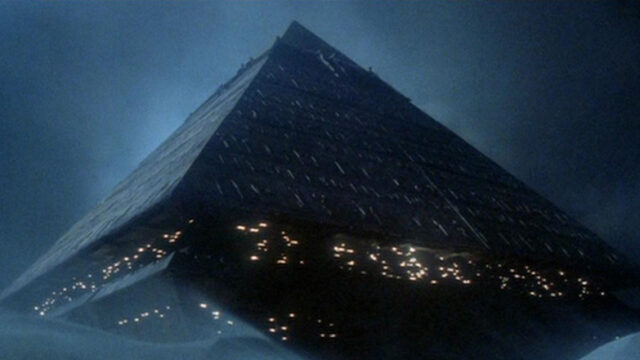
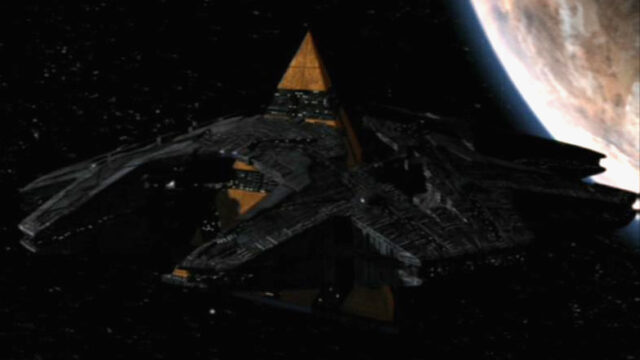
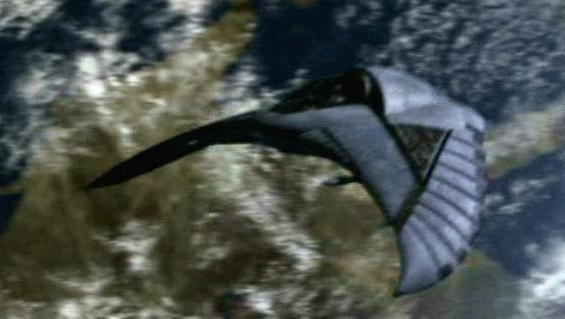
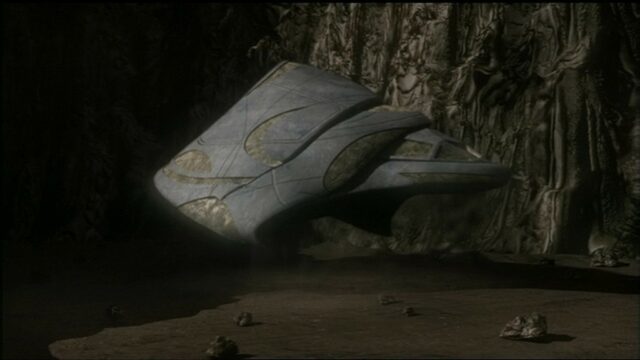

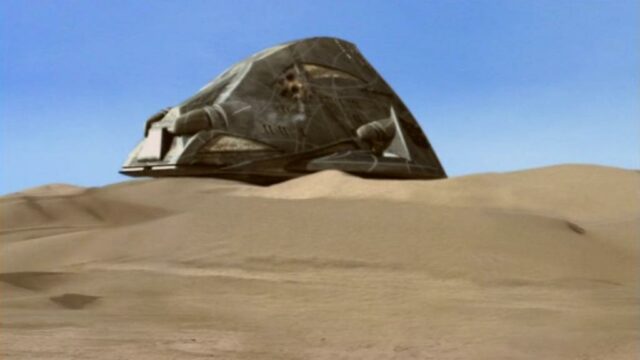


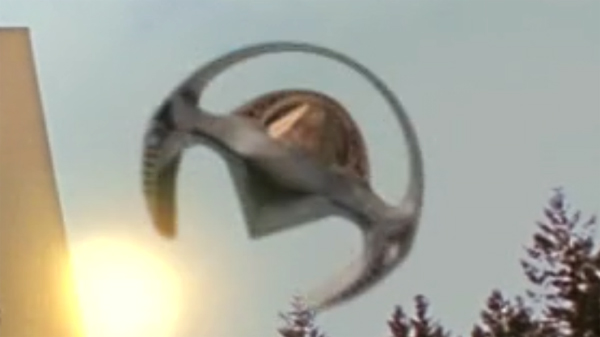

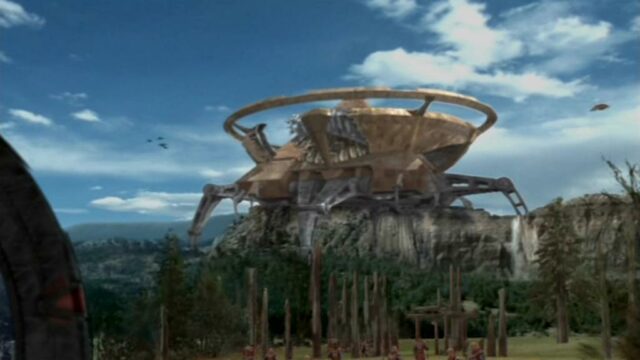
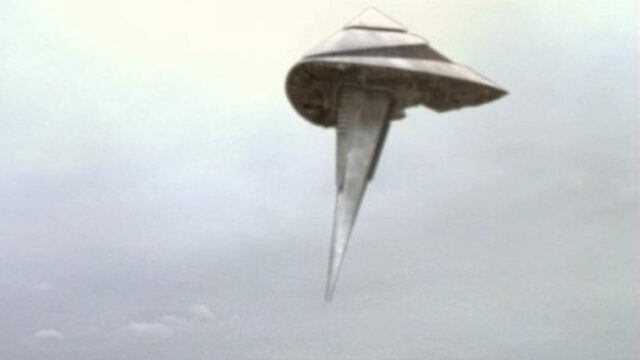
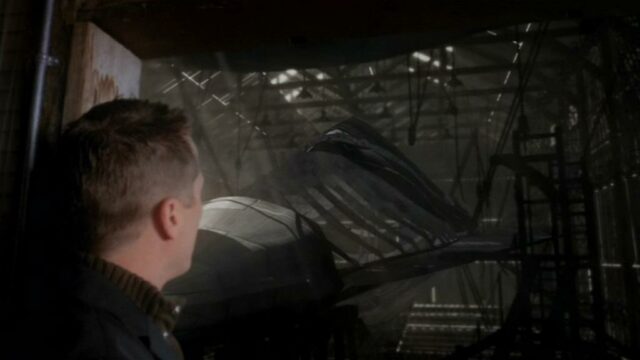
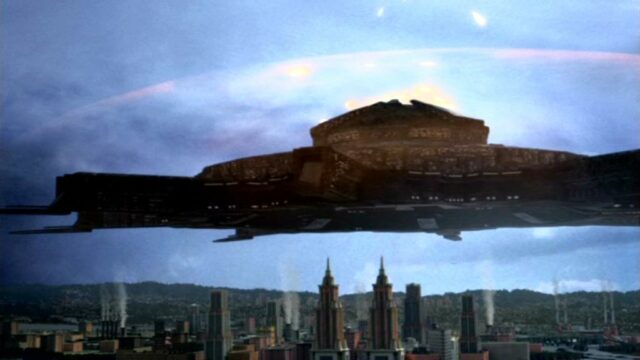
Ha’Tak ship spotted near Earth and confirmed by the Pentagon :D
https://edition.cnn.com/videos/business-videos/2021/04/15/navy-pyramid-ufo-video-orig-jm-kj.cnn